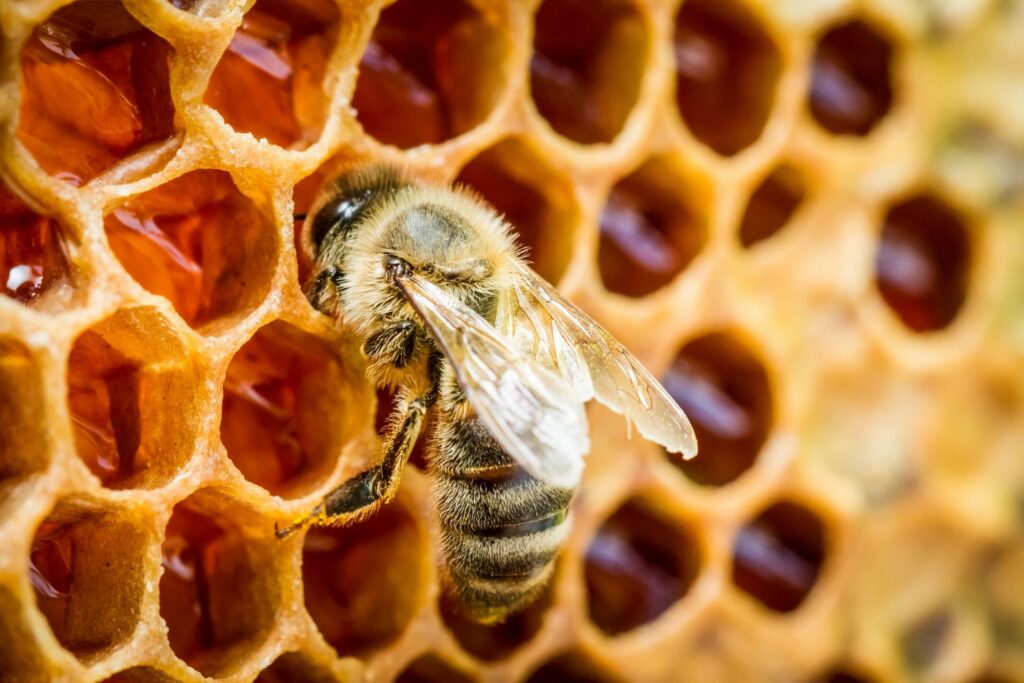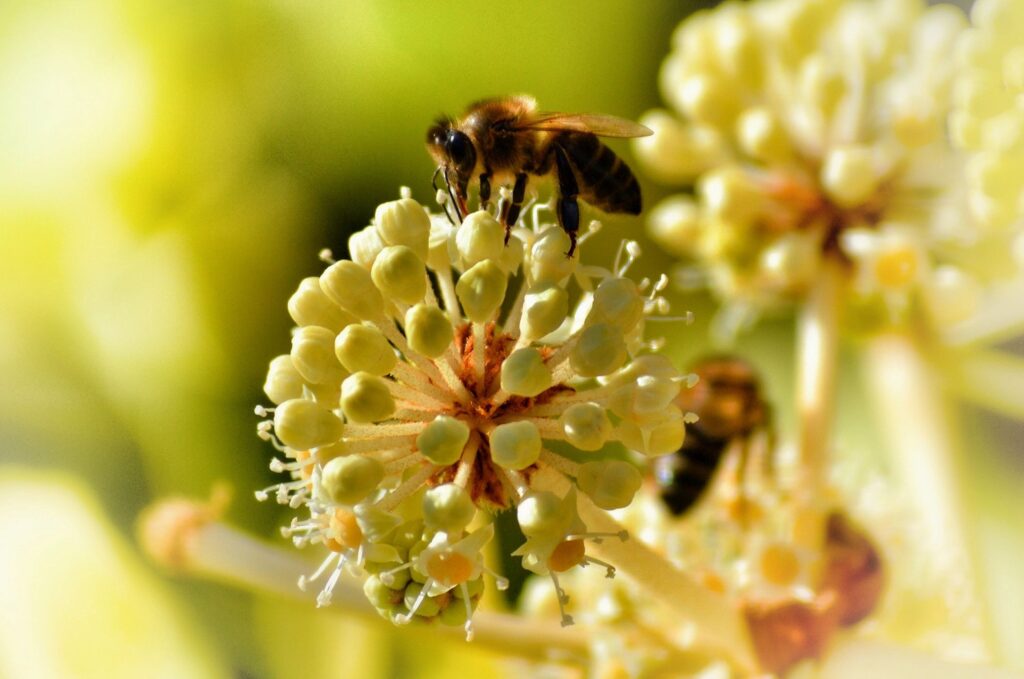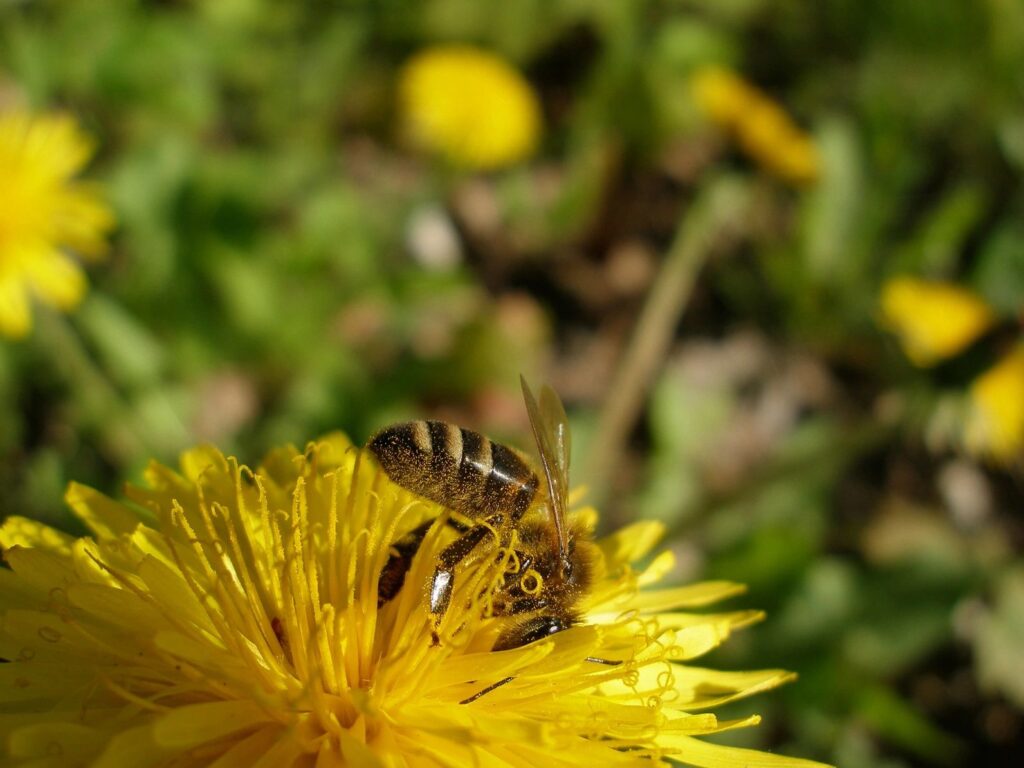Around the Pines: Make Way for Bees!


Around the Pines: Make Way for Bees!
Having just moved back to the area after spending a few years living in Columbus, I am definitely looking forward to experiencing nature through all the seasons where there is wildlife again. We moved just before winter came along, so while we have been enjoying watching the deer, birds, and squirrels in our woods, we’ve yet to be able to spend much time outside and tending to the yard. This is something I am excited about with each day that is gets warmer, and the number one thing I want to do is prepare the yard for bees and other pollinators.

The first thing you might think of is digging out your flower bed and preparing to plant, but our first step is a bit more simple than that. The first thing on your list – do nothing. Sounds counterproductive, right? Bees, butterflies, and other insects actually do something called overwintering. Overwintering is when they hibernate in a sense in your garden debris, things like leaves, your dead flowers from last year, and even inside hollow stems and twigs. Some overwinter as a chrysalis, while others remain in their caterpillar or larvae state. You may also find bees and butterflies curled up inside those hollow stems we mentioned. They are so small and well hidden you would probably throw them out, or if you burn your brush, burn them up without ever realizing they were there. The best thing to do to prevent this is make sure the temperature holds above 50 degrees Fahrenheit for a couple weeks before cleaning up to give them a chance to get out.

You might now be wondering about the rest of your yard, and if it would be ok to mow as long as the brush piles and flower beds are left undisturbed. Well, it is actually best to take the do-nothing approach here as well. In southeast Ohio just about all of us has a yard full of dandelions at some point during the spring. A lot of people don’t like them and prefer to mow them down as soon as possible, but dandelions serve as the first blooms for most pollinators. You will want to wait to mow until you see them turn white and puffy to give the bees and butterflies the best start this spring. Planting clover seeds in your lawn also helps them if you don’t care for dandelions. If you can, it is also a good idea to dedicate an area of yard you won’tmow. Some people like putting up a “Please excuse my bee lawn” sign if they have neighbors.
Now on to something we can actually do to prepare for our pollinator friends. Buzzing around from flower to flower all day can get pretty tiring, that is why they need places they can rest and recharge. A bee hotel is a great way to provide a safe resting point. Bee hotels are wood boxes that typically are filled with hollowed out sticks or bamboo shoots, some also feature wood discs with holes drilled in them. Bees and other pollinators will catch a nap inside a flower blossom sometimes, so it is best to put these in stretches of yard that may not have as much for them to land on, such as in between your flower beds. You may also see ladybugs and wasps taking a stay at your hotel, they are also garden friends so be sure to let them have a rest too. Some people like to DIY these for a fun project, but there are many premade online as well, or at most home and garden stores. Water is also essential for pollinators. You can start with a regular birdbath you may already have, if it is not shallow be sure to place small stones that sit just above the water level so they have some place to rest while they drink.
Now that you are set up as a haven for pollinators it is time to think about planting. It is important to stay away from pesticides as these harm more than just the annoying bugs. Planting flowers that bloom at different times from spring through fall is also ideal. It is important to include native blooms that the pollinators are sure to recognize.
The following is a list of just some pollinator friendly plans native to Ohio:
- Goldenrod
- White and Purple Asters
- Yellow Sweet Clover
- Birdsfoot Trefoil
- White Dutch Clover
- Giant Catmint
- Butterfly Weed
- Giant Milkweed
- Purple Star Thistle
- Black Eyed Susan
- Marsh Marigold
Bees also like herbs with an aromatic or minty fragrance such as:
- Basil
- Oregano
- Thyme
- Sage
- Rosemary
Stay pollinated friends!
About ‘Around the Pines’: Catherine is a Meigs county native who just recently moved back to the area. Her homestead with her fiancé is affectionately called “Johnston Pines” for what will soon be her family name, and for the many variety of pine trees on the property. Around the Pines is a blog column that varies from topics about the outdoors, sustainable living, and many other interests. Questions for the author or suggestions for article topics may be sent to [email protected] or [email protected]






